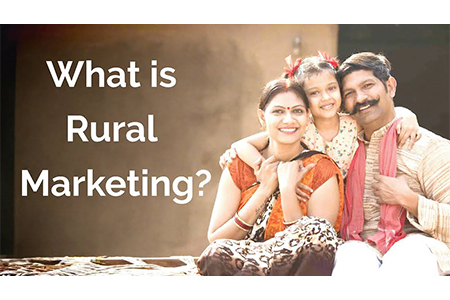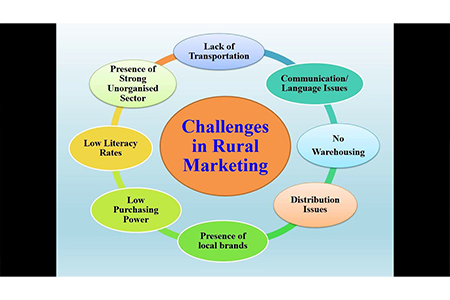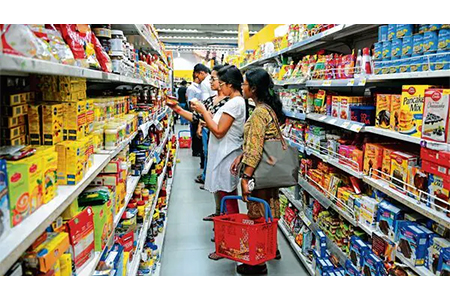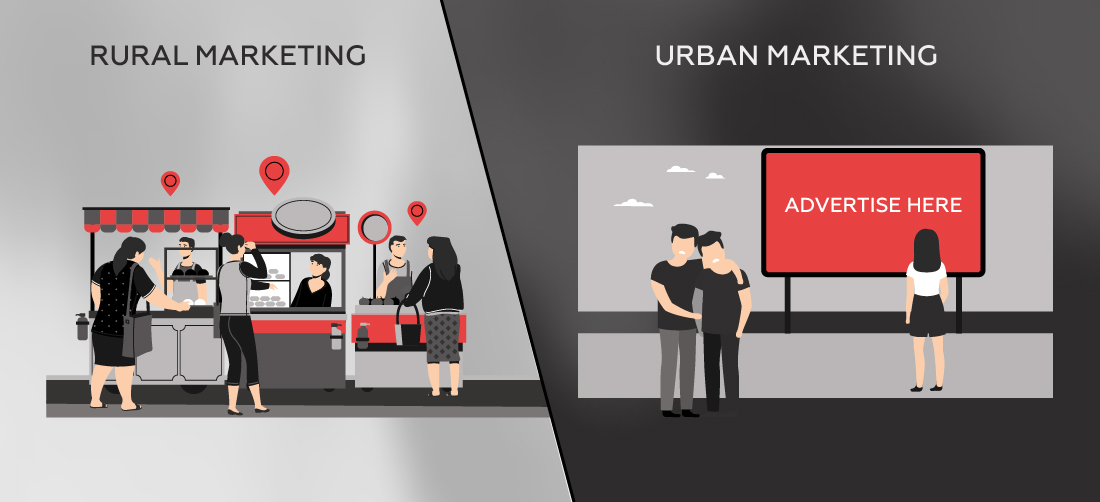Overview
Rural and urban marketing are differentiated not only geographically but also in terms of mind, behavior, and infrastructure. In India, both sectors require different strategies due to the varying needs of consumers, purchasing capacity, and communication channels. Rural marketing survives on trust, affordability, and local participation, whereas urban marketing is all about innovation, brand worth, and internet connectivity. It is important for companies that seek to access India's complete economic potential to understand these differences since both segments have a big contribution to national consumption patterns.
What is Rural Marketing?
Rural marketing refers to strategies to access consumers in India's rural villages and small townships. With over 65% of the population residing in rural regions, the market provides tremendous opportunities in industry segments including FMCG, agriculture, and telecom. Rural consumers are value-oriented, reliable, and have local aspirations. The ambit covers both marketing rural products to urban markets and the reverse. Distinct features like limited media presence, seasonal revenues, and conservative values dictate the way brands need to interact with this dynamic and emerging group.

Challenges and Strategies in Reaching Rural Audiences in India
Limited Infrastructure and Accessibility
Reaching rural India usually means crossing impoverished roads, patchy connectivity, and erratic power supply. This impedes the flow of goods, services, and information, thus making rural marketing a logistics nightmare. Marketers must find ways to bypass this by using local distribution partners, mobile vans, and simple communication mechanisms to bridge the gap effectively.
Cultural Sensitivity and Localized Messaging
Rural consumers are based on cultural and linguistic heterogeneity. The strategy of one size fits all doesn't apply here. Brands need to localize messages in local languages and add local culture and values to build resonance and credibility among rural populations.
Price Sensitivity and Affordability
Rural consumers are very price-sensitive and value-for-money consumers. Providing smaller pack sizes, low prices, and functional benefits assures greater acceptability. Marketers must think utility, not extravagance, while designing rural product options.
Building Trust and Community Engagement
Trust is of paramount significance in rural marketing. Word-of-mouth, local leaders, and person-to-person interaction would be stronger than mass media campaigns. Community interaction through health camps, educational campaigns, or product demonstrations creates real relationships with the rural consumer.
Innovative Rural Distribution Channels
With institutional retail channels being limited, brands have no option but to rely on new-age distribution channels like hub-and-spoke models, mobile kiosks, and rural entrepreneur partnerships. Relying on local networks guarantees constant stock availability and last-mile reach.

What is Urban Marketing?
Urban marketing addresses consumers in metros and cities, who live a digitally connected, speedy, brand-conscious, and urban life. Urban consumers look for premium experience, diversity, and convenience. This segment has greater disposable income, universal digital literacy, and regular media access. Targeted adverts, influencer advertising, and omnichannel strategies are employed by marketers to stay in touch. World urbanization and shifting consumption patterns demand urban marketing to be agile, information-based, and ferociously focused to become noticed and drive brand commitment.

Challenges and Strategies in Targeting Urban Consumers in India
Intense Competition and Brand Clutter
Urban markets are over-branded with companies vying for consumer notice. Differentiation means innovative branding, recall-making campaigns, and tactful positioning on digital and offline media.
Evolving Consumer Preferences
Fashion-oriented urban consumers continuously shift their tastes. Leadership requires continuous innovation, rich consumer insight, and responsive offerings that capture changing tastes and lifestyles.
High Digital Penetration and Social Media Usage
Mass smartphone and internet penetration enable urban marketing to rely on social media conversation, influencer partnerships, and niche digital content to drive quality brand conversations.
Demand for Premium and Experiential Offerings
Urban consumers purchase based on quality and experience over cost. Brands have to design aspirational but real narratives, providing products that share status, satisfaction, and increased functionality.
Sustainability and Social Responsibility
Modern urban dwellers care about sustainability and ethical business. Promotions highlighting ecogeniality, social stewardship, or community interaction create greater bonds and brand allegiance.

Rural Marketing vs Urban Marketing
| Aspect | Rural Marketing | Urban Marketing |
|---|---|---|
| Audience Reach | Scattered, geographically diverse | Concentrated, easier to segment |
| Adoption of Technology | Low to moderate, emerging gradually | High digital penetration |
| Consumer Behavior | Trust-based, community-influenced | Individualistic, trend-driven |
| Spending Power | Limited, value-oriented | Higher, aspirational |
| Marketing Channels | Radio, vans, local events, rural influencers | Social media, online ads, retail outlets |
| Product Strategy | Affordable, functional, smaller pack sizes | Premium, diverse, experience-driven |
| Brand Trust | Built over time via personal interaction | Influenced by media, reviews, and brand visibility |
The Importance of Balancing Urban and Rural Markets in India
India's growth narrative cannot be complete without a balanced marketing strategy towards both rural and urban markets. Urban marketing generates volume in competitive markets, whereas rural marketing taps potential that lies untapped. While city consumers look for innovation and lifestyle enhancement, rural customers provide scale and loyalty when approached correctly. Marketers who synthesize intelligence from both worlds create strength and long-term sustainability. In balance between these markets guarantees inclusive growth, sustained brand presence, and a robust presence across various population segments.
Case Studies
Businesses such as Hindustan Unilever have done very well in rural and urban marketing. HUL equipped rural women as micro entrepreneurs under Project Shakti, building reach and gaining trust. Concurrently, in cities, it employed digital campaigns and influencer marketing to stay top-of-mind. Similarly, Coca Cola employed low-priced SKUs for rural markets while implementing premium lifestyle advertisements for cities. These are examples of how tailored strategies by geographies make brands meaningful, inclusive, and profitable at scale.
Conclusion
Urban and rural marketing in India are not opposing forces but complementary approaches that, in harmony, release astronomical growth. Where urban marketing is innovative, convenient, and digitally engaging, rural marketing is centered on trust, accessibility, and relevance. Brands that are flexible with the special requirements of each market not only expand their customer base but also build stronger relationships. As India develops, the brightest marketers will be those who comprehend and merge both segments into an integrated, effective strategy.
Frequently Asked Questions (FAQs)
The 4A's, Acceptability, Affordability, Accessibility, and Awareness, drive rural marketing by making products acceptable, affordable, accessible, and well-promoted in local settings.
These four Ps-Promotion, Place, Price, and Product-adjust themselves in rural marketing so as to make value-based propositions with a lower price, availability, and promotion that appeals to the culture.
The rural marketing-mix activities primarily focus on market penetration, brand creation, product customization, and inclusive growth for rural consumers.
Yes, these companies-Hindustan Unilever, Coca-Cola, and ITC are very much specializing in rural and urban marketing, for the regional strategies hit chords for both markets.
Urban marketing must target fashion conscious and technology-aware consumers to recognize good opportunity and to grow in the highly competitive, high-expenditure city markets.



